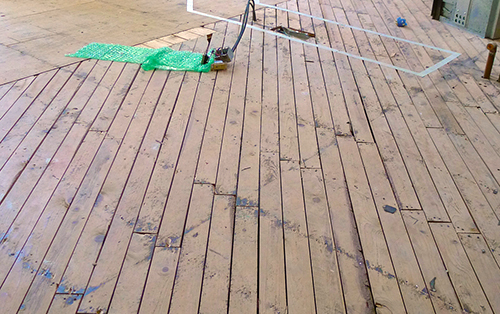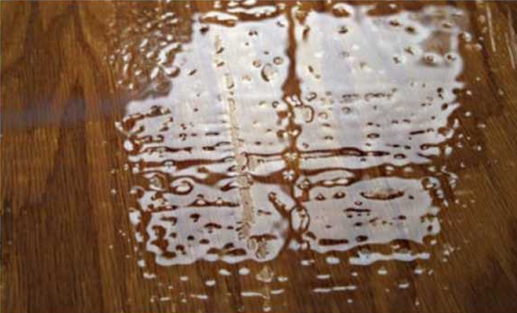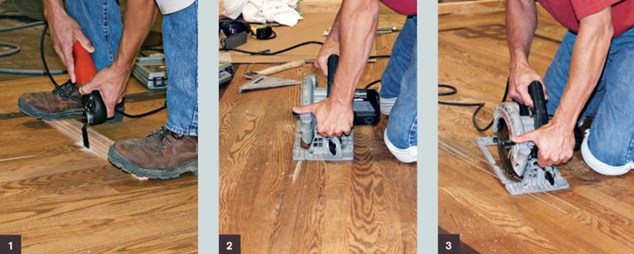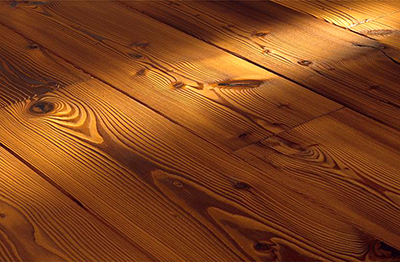Are Laminate Floors A Good Alternative To Hardwood Flooring?
Exploring the world of flooring options can be overwhelming, but the decision between hardwood and laminate is a common dilemma for many homeowners. While hardwood flooring is known for its timeless elegance and durability, laminate flooring has emerged as a popular alternative for those seeking a more budget-friendly and easy-to-maintain option. Before making a final choice, it is essential to weigh the benefits and drawbacks of each to determine which option best suits your needs and lifestyle.
Key Takeaways:
- Durability: Laminate floors are highly durable and can withstand scratches, dents, and stains better than hardwood flooring.
- Cost-effective: Laminate floors are a more budget-friendly alternative to hardwood flooring, offering a similar aesthetic at a lower price point.
- Easy Maintenance: Laminate floors are easy to maintain, requiring simple cleaning and occasional mopping, making them a convenient option for busy households.
Understanding Laminate Flooring
While hardwood flooring has been a popular choice for homeowners, laminate flooring has emerged as a more affordable and durable alternative. Before deciding on the type of flooring for your home, it’s essential to understand the intricacies of laminate flooring.
Composition and Manufacturing of Laminate Floors
Composition: Laminate flooring consists of multiple layers that are compressed together under high pressure. The core layer is usually made of high-density fiberboard, which is topped with a realistic image of wood or stone, protected by a clear, resilient wear layer. This top layer enhances the durability of the flooring, making it resistant to scratches, stains, and fading.
The Evolution of Laminate Flooring Technology
Laminate: Over the years, laminate flooring has evolved significantly in terms of realism and durability. The latest technology allows for textures that mimic the look and feel of real hardwood, making it difficult to distinguish between the two. Additionally, advancements in manufacturing processes have improved the water-resistant properties of laminate flooring, making it suitable for high-moisture areas such as kitchens and bathrooms.
Manufacturing: The manufacturing process of laminate flooring involves bonding the layers together using heat and pressure, creating a sturdy and long-lasting product. This technology ensures that laminate flooring can withstand heavy foot traffic and daily wear and tear, making it a practical choice for busy households.
Benefits of Laminate Flooring
Some homeowners are turning to laminate flooring as a Top 5 Alternatives to Traditional Hardwood Floors. Laminate flooring offers a wide range of benefits that make it a popular choice for those seeking a cost-effective, durable, and stylish flooring option.
Cost-Effectiveness
To begin with, laminate flooring is a more affordable option compared to traditional hardwood floors. The manufacturing process of laminate allows for cost savings without compromising on quality. Homeowners can achieve the look of hardwood at a fraction of the price, making it an attractive choice for budget-conscious individuals.
Durability and Longevity
With laminate flooring, you get the benefit of a durable and long-lasting floor covering. The material is resistant to scratches, dents, fading, and stains, making it an ideal choice for high-traffic areas in the home. Plus, most laminate flooring is backed by a warranty, providing homeowners with added peace of mind.
Plus, laminate flooring is easy to maintain and requires minimal upkeep over the years, saving homeowners time and money in the long run. Its durability ensures that it will look great for years to come, even in busy households or commercial settings.
Ease of Installation
Flooring installation can be a hassle, but with laminate flooring, the process is quick and easy. Many laminate options come with interlocking systems that allow for a DIY-friendly installation, saving homeowners the cost of hiring a professional. For instance, some laminate planks are designed to click together easily, eliminating the need for glue or nails.
Variety of Styles and Designs
Styles and designs are abundant when it comes to laminate flooring. You can choose from a wide range of colors, textures, and patterns to complement your home’s aesthetic. Whether you prefer the look of hardwood, tile, or stone, there is a laminate option to suit your style and budget.
Benefits like easy maintenance, affordability, and durability make laminate flooring a practical choice for any space in your home. It’s a versatile flooring option that offers the look and feel of hardwood without the high price tag or maintenance requirements.
Maintenance and Cleaning
An important benefit of laminate flooring is its easy maintenance and cleaning requirements. It’s easy to clean with regular sweeping and occasional mopping, making it a hassle-free option for busy households. It is also resistant to moisture and spills, making it an excellent choice for kitchens, bathrooms, and other high-moisture areas. With proper care, laminate flooring can maintain its beauty and durability for years to come.
Comparing Laminate to Hardwood Flooring
Unlike hardwood flooring, laminate flooring is a man-made product composed of multiple layers that are fused together through a lamination process. To help you decide between laminate and hardwood flooring, let’s break down the key differences in the table below:
| Laminate Flooring | Hardwood Flooring |
| Durable and scratch-resistant | Natural and timeless beauty |
| More affordable | Can be sanded and refinished |
| Easy to install | Increases home value |
Aesthetic Considerations
To make your decision between laminate and hardwood flooring, consider the aesthetic differences. Laminate flooring comes in a wide range of styles that can mimic the look of real wood, tile, or stone. While hardwood flooring offers natural warmth and character that can enhance the overall feel of a room.
Lifespan and Wear
Any flooring choice should stand the test of time, and when it comes to lifespan and wear, hardwood flooring typically lasts longer than laminate. It can be sanded and refinished multiple times, allowing it to look new for generations. Laminate flooring may need to be replaced entirely if it gets severely damaged.
It’s essential to consider maintenance and repair costs over the long term when choosing between laminate and hardwood flooring. Hardwood requires regular maintenance like refinishing and restaining, while laminate is generally easier to clean and doesn’t require frequent upkeep.
Impact on Home Value
Lifespan and wear play a significant role in the impact of flooring on the value of your home. Hardwood flooring is a timeless choice that can increase the resale value of your home. Potential buyers often prefer the natural beauty and durability of hardwood over laminate, which could make your property more attractive in the real estate market.
Homeowners should consider the upfront cost of installation and the long-term value when deciding between laminate and hardwood flooring. While laminate may be a more budget-friendly option initially, investing in hardwood flooring can pay off in the long run by adding value to your home.
Environmental Concerns
Lifespan and sustainability are essential factors to consider for those with environmental concerns. Hardwood flooring is a renewable resource that can be sourced responsibly, whereas laminate flooring is made of synthetic materials like fiberboard and melamine resin, which have a higher environmental impact. Opting for hardwood from certified sustainable sources can help reduce the environmental footprint of your flooring choice.
Considerations such as the manufacturing process, recyclability, and eco-friendliness should be taken into account when choosing between laminate and hardwood flooring. Making an informed decision based on environmental concerns can help reduce the overall impact on the planet.
Installation Considerations
DIY vs. Professional Installation
Despite the allure of saving money by opting for a do-it-yourself approach to installing laminate flooring, it’s crucial to weigh the pros and cons. For homeowners with experience in home improvement projects and the necessary tools, tackling the installation themselves can be a feasible option. However, it’s essential to recognize that incorrect installation can lead to problems down the line, such as shifting panels, uneven surfaces, and voided warranties.
Additionally, professional installation offers the advantage of expertise and efficiency. Certified installers have the knowledge and tools to ensure a flawless finish, potentially saving time and frustration in the long run. While it may incur additional costs, enlisting professionals can provide peace of mind and guarantee a high-quality result.
Necessary Tools and Materials
The tools and materials required for laminate flooring installation include a tapping block, pull bar, spacers, circular saw, measuring tape, utility knife, underlayment, and of course, the laminate flooring planks. It’s crucial to have these items readily available before beginning the installation process to ensure a smooth workflow.
This ensures that you have everything you need to complete the installation efficiently and effectively. Without the necessary tools and materials, the process can be delayed or compromised, leading to subpar results.
Step-by-Step Installation Process
| Step | Description |
| 1 | Prepare the subfloor by cleaning and leveling it. |
| 2 | Install the underlayment to provide cushioning and moisture protection. |
| 3 | Begin laying the laminate planks, ensuring proper spacing with spacers. |
| 4 | Use a tapping block and pull bar to securely lock the planks in place. |
| 5 | Trim the last row of planks to fit, leaving room for expansion. |
Necessary planning and precision are key in ensuring a successful installation process. By following each step meticulously, you can achieve a professional-looking result that will enhance your living space.
Potential Installation Challenges
The processmay encounter challenges such as uneven subfloors, transitioning between rooms, or intricate layouts. It’s essential to address these issues early on and come up with solutions to ensure a seamless installation. Taking the time to plan and troubleshoot can prevent headaches and costly mistakes in the long run.
It’s imperative to approach the installation process with patience and attention to detail to overcome any obstacles that may arise. By staying vigilant and proactive, you can achieve a stunning laminate flooring finish that enhances your home for years to come.

Challenges and Drawbacks of Laminate Flooring
Susceptibility to Moisture Damage
Moisture is one of the biggest challenges when it comes to laminate flooring. Unlike hardwood floors, laminate is more susceptible to water damage. If exposed to excessive moisture or not properly sealed, laminate flooring can warp, swell, or even delaminate. This makes it a poor choice for areas prone to high humidity or frequent spills, such as bathrooms or kitchens.
Additionally, poorly installed laminate flooring may leave gaps between the planks, creating opportunities for moisture to seep in and cause further damage. It is essential to address any water spills promptly and avoid using excessive water when cleaning laminate floors to prevent swelling and warping.
Repair and Replacement Issues
On the downside, repairing and replacing damaged laminate flooring can be a cumbersome process. Unlike hardwood floors that can be sanded, refinished, and repaired to extend their lifespan, damaged laminate planks usually need to be completely replaced. Finding an exact match for the existing flooring can be challenging, leading to visible discrepancies in color and texture.
Issues: Furthermore, the cost of replacing laminate flooring can add up quickly, especially if the damage is extensive or if the flooring has been discontinued. It is essential to buy extra planks of the same batch during installation to ensure that replacements blend seamlessly with the existing flooring.
Sound and Comfort
The sound and comfort of laminate flooring can also pose challenges. Unlike the warmth and sound-absorbing properties of hardwood floors, laminate can be noisy underfoot, producing a hollow sound when walked on. This can be a nuisance in homes with multiple occupants or pets, as the noise can be amplified.
Sound: Additionally, laminate flooring can feel harder underfoot compared to hardwood, which may reduce comfort, especially in areas where individuals stand for extended periods. Adding area rugs or underlayment can help cushion the floor and reduce noise levels.
Limitations in Refinishing
For those considering laminate flooring, it is essential to note that this type of flooring has limitations when it comes to refinishing. Unlike hardwood floors that can be sanded and refinished multiple times to restore their appearance, laminate flooring has a wear layer that cannot be refinished. Once this layer is worn out or damaged, the only solution is to replace the affected planks.
Repair: While laminate flooring is relatively low maintenance, it is essential to take preventive measures to avoid scratches, dents, and wear on the surface. Using furniture pads, area rugs, and avoiding high heels or sharp objects on the floor can help preserve its appearance and prolong its lifespan.

Making the Decision
Assessing Lifestyle and Usage Needs
Keep in mind your lifestyle and usage needs when considering laminate floors as an alternative to hardwood. Assessing how much foot traffic and wear and tear your floors will endure is crucial. If you have a busy household with children and pets, laminate may be a more practical choice due to its durability and resistance to scratches and stains.
Additionally, consider your cleaning habits and maintenance routines. Laminate flooring is easier to clean and maintain compared to hardwood, making it a suitable option for those who prefer low-maintenance flooring solutions.
Budgetary Considerations
On a budget? On a strict financial plan, laminate flooring often offers a more cost-effective solution compared to hardwood. While hardwood floors can be more expensive upfront, laminate floors provide a more affordable option without compromising on quality or aesthetics.
To make the most of your budget, carefully weigh the long-term value and return on investment (ROI) that each flooring option offers, considering factors such as lifespan and maintenance costs.
The Role of Aesthetics in Choice
On top of practical considerations, aesthetics play a significant role in choosing between laminate and hardwood flooring. On one hand, hardwood floors are renowned for their timeless appeal and natural beauty, adding a touch of elegance to any space. Alternatively, laminate flooring offers a wide range of styles and designs that can mimic the look of hardwood, giving you the flexibility to achieve your desired aesthetic at a lower cost.
When budgetary constraints are a concern, laminate flooring provides a practical alternative that does not compromise on aesthetics. With advancements in technology, laminate flooring can closely resemble the appearance of hardwood floors, allowing you to achieve the look you want without exceeding your budget.
Long-Term Value and ROI
Making an informed decision about your flooring involves considering the long-term value and return on investment (ROI). Making the choice between laminate and hardwood floors should take into account factors such as durability, maintenance costs, and resale value. While hardwood floors may offer a higher return on investment due to their timeless appeal and longevity, laminate flooring provides a more affordable option with lower maintenance costs over time.
Final Words
So, in conclusion, laminate floors can be a good alternative to hardwood flooring depending on your budget, lifestyle, and preferences. While laminate flooring may be more affordable and easier to maintain, hardwood floors offer a timeless, classic look and can increase the value of your home. It ultimately comes down to what works best for you and your home. If you’re still unsure, you can explore further insights on the topic by checking out What’s your opinion on wood flooring vs laminate flooring if you want something for a decent price?
FAQ
Q: Are laminate floors a good alternative to hardwood flooring?
A: Yes, laminate floors are a popular and cost-effective alternative to hardwood flooring. They offer durability, easy maintenance, and a wide range of styles to mimic the look of real hardwood.
Q: What are the benefits of choosing laminate floors over hardwood flooring?
A: Laminate floors are typically more affordable than hardwood, resistant to scratches and moisture, easy to install, and require minimal maintenance. They are also a great option for those with allergies as they do not trap dust and allergens.
Q: How do laminate floors compare to hardwood in terms of durability?
A: Laminate floors are incredibly durable and resistant to scratches, dents, and stains, making them a great choice for high-traffic areas in homes. While hardwood can be refinished to remove damage, laminate cannot be refinished but can last for many years with proper care.
Q: Can you install laminate floors in all areas of the home?
A: Laminate floors are versatile and can be installed in almost any area of the home, including living rooms, bedrooms, kitchens, and basements. It is important to follow manufacturer recommendations for installation in areas prone to moisture, such as bathrooms.
Q: How do I maintain and clean laminate floors?
A: To maintain laminate floors, regularly sweep or vacuum to remove dirt and debris. Use a damp mop with a manufacturer-approved cleaner for deeper cleaning. Avoid using excessive water or harsh chemicals, as these can damage the laminate surface. Additionally, use felt pads on furniture legs to prevent scratches.
If you are looking for a hardwood flooring supplier near you – Kapriz Hardwood Flooring store is your best option. Our selection of hardwood, laminate, and vinyl is great. You can check out our website or Call Us.







